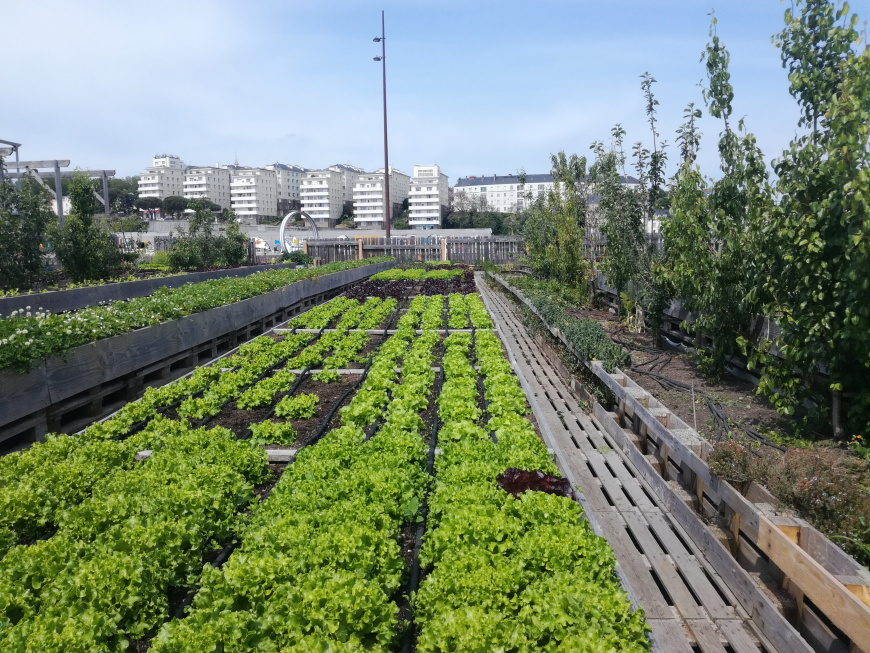9 Easy Facts About City Blooming Described
9 Easy Facts About City Blooming Described
Blog Article
The Definitive Guide for City Blooming
Table of ContentsThe smart Trick of City Blooming That Nobody is DiscussingThe Ultimate Guide To City BloomingWhat Does City Blooming Do?The Facts About City Blooming UncoveredUnknown Facts About City Blooming
Fascinated in expanding food to buy in the City of Chicago? Thinking of starting a neighborhood garden? Changes to the Chicago Zoning Regulation enable farming uses like area yards and metropolitan ranches in several parts of the city. Below is a checklist of regularly asked inquiries relating to the guidelines and regulations that growers need to consider when preparing a metropolitan farming task.
The zoning change does not change any type of various other codes managing composting, building permits, buying or renting City owned residential or commercial property, organization licenses or environmental contamination. There are existing codes that manage these concerns and they continue to be in full result and might be applicable to your job. Community yards are usually owned or taken care of by public entities, public organizations or community-based companies and kept by volunteers.
Urban ranches grow food that is meant to be sold, either on a nonprofit or for-profit basis. Due to their industrial function, urban ranches require a service license.
City Blooming - An Overview
The amount of garden compost material can not exceed 25 cubic lawns at any kind of offered time according to the standards in 7-28-715 of the City's Municipal Code. Due to the fact that the soil at many brand-new yard websites needs amending, garden compost, dirt, wood chips, or various other products can be gotten to build or boost the expanding area.

If a building license is called for after that the hoophouse will certainly be thought about an accessory building. You can figure out more concerning the structure permit requirements by getting in touch with the Division of Buildings. The 25,000-square-foot dimension limitation is planned to stop a solitary community garden from controling a given block or diminishing the block's existing residential or commercial character.
The limitation does not use to gardens found in Public Open Room (POS) districts. Can there be more than one neighborhood yard that is 25,000 square feet on a single block? Fencing is not called for, however, yards that have big parking areas may be needed to set up fencing or various other landscape design attributes.
The 6-Second Trick For City Blooming
B1 & B2 areas call for that all industrial use tasks be conducted inside your home. Is fence required for metropolitan farms? Fencings might be required, along with landscaping and testing, for certain auto parking areas and outdoor work or storage space areas depending on location and the specific activity taking location.
Urban ranches call for building licenses and zoning approvals prior to building (sustainable gardening). original site Various other forms of city testimonial might be required depending on specific structures, activities, size, landscaping, licensing, public health and stormwater management problems.
Yes. The kind of certificate is determined by what is taking place at the website. The Department of Business Matters and Customer Defense can help identify the details sort of service certificate that's needed. Yes. Off street car park is needed for many industrial jobs in Chicago. The required number of garage is based on the variety of staff members working on site and not the square footage of the expanding area.
Some Known Facts About City Blooming.

An urban ranch can offer garden compost material generated on site, nevertheless, the procedure must abide with the guidelines in 7-28-715 of the Chicago Municipal Code. Aquaponic systems are enabled inside on urban farms in many zoning districts.
Approximately five hives or swarms of honey bees might be kept as an accessory use. Beekeepers need to register with the Illinois Division of Agriculture. For additional information concerning the recommended zoning change you might get in touch with the Department of Real Estate and Economic Advancement, Bureau of Planning and Zoning at 312.744.8563.
Farming in cities and urban locations An urban ranch in Chicago. Urban agriculture refers to various techniques of growing. https://giphy.com/channel/cityblooming, processing, and distributing food in metropolitan locations. The term also puts on the location tasks of pet husbandry, tank farming, beekeeping, and gardening in a metropolitan context. Urban farming is identified from peri-urban farming, which takes location in country areas at the side of residential areas.
The Greatest Guide To City Blooming
, who look for to create social networks established on a shared ethos of nature and area holism. These networks can establish by method of official institutional assistance, ending up being integrated right into local town preparation as a "transition community" movement for sustainable metropolitan development.
Some of the first evidence of city agriculture comes from Mesopotamia.
Report this page